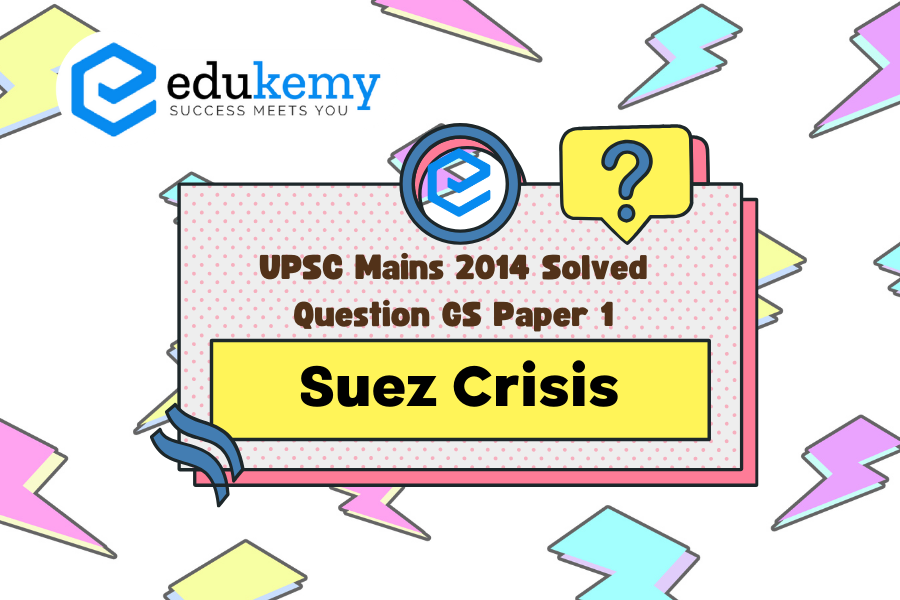The Suez Crisis of 1956 was sparked by a complex web of political, economic, and strategic factors. Key events leading to the crisis include the nationalization of the Suez Canal by Egyptian President Gamal Abdel Nasser in July 1956, which angered Britain and France, who saw their control over the canal threatened. Additionally, Nasser’s increasing alignment with the Soviet bloc heightened tensions during the Cold War era. In response to Nasser’s actions, Britain, France, and Israel colluded in a secret plan to invade Egypt and seize control of the canal. However, the intervention faced international condemnation, particularly from the United States and the Soviet Union, leading to a diplomatic and military standoff. The crisis ultimately exposed Britain’s diminishing influence on the world stage, highlighting its inability to act independently and marking a significant decline in its self-perceived status as a global power.
Tag: History of the world.
Contents
Decoding the Question:
- Introduction- Start with mentioning the location and creation of the Suez Canal.
- In Body,
- Discuss the major events that led to the Suez Crisis in 1956.
- Show how it dealt a final blow to Britain’s self-image as a world power.
- Conclude the answer by mentioning the aftermath of the Suez Crisis.
Answer:
The Suez Canal was built in Egypt under the supervision of French diplomat Ferdinand de Lesseps. The man-made waterway opened in 1869 after ten years of construction and separates most of Egypt from the Sinai Peninsula. At 120 miles long, it connects the Mediterranean Sea to the Indian Ocean by way of the Red Sea, allowing goods to be shipped from Europe to Asia and back more directly. Its value to international trade made it a nearly instant source of conflict among Egypt’s neighbours and Cold War superpowers vying for dominance.
Suez Crisis is culmination of following events:
- The Suez Crisis began on October 29, 1956, when Israeli armed forces pushed into Egypt toward the Suez Canal after Egyptian president Gamal Abdel Nasser (1918-70) nationalized the canal, a valuable waterway that controlled two-thirds of the oil used by Europe.
- The Israelis were soon joined by French and British forces, which nearly brought the Soviet Union into the conflict and damaged their relationships with the United States.
- In the end, Egypt emerged victorious, and the British, French, and Israeli governments withdrew their troops in late 1956 and early 1957.
The Suez crisis is often portrayed as Britain’s last fling of the imperial dice:
- In 1956, the globe was indeed still circled by British possessions and dependencies, from the Caribbean in the west to Singapore, Malaya and Hong Kong in the east. Much of the African map was still imperial pink.
- Around 1940-50s the greatest possession of the British empire, the Indian subcontinent, had taken its freedom.
- Nationalist movements were flourishing in most of the rest, patronized by Soviet Russia and encouraged by the United States in its self-appointed role as leader of the free world.
- Britain itself was only beginning to emerge from post-war austerity, its public finances crushed by an accumulation of war debt.
In July 1956, the last British soldiers pulled out of the canal zone. On July 26, Egyptian President Gamal Abdel Nasser abruptly announced the nationalization of the Suez Canal Company. Prime minister Anthony Eden was scandalized and, riding a wave of popular indignation, prepared a grotesquely disproportionate response: full-scale invasion. Thus, the Suez crisis was the final blow to Britain’s self-image as a world power.
In case you still have your doubts, contact us on 9811333901.
For UPSC Prelims Resources, Click here
For Daily Updates and Study Material:
Join our Telegram Channel – Edukemy for IAS
- 1. Learn through Videos – here
- 2. Be Exam Ready by Practicing Daily MCQs – here
- 3. Daily Newsletter – Get all your Current Affairs Covered – here
- 4. Mains Answer Writing Practice – here


